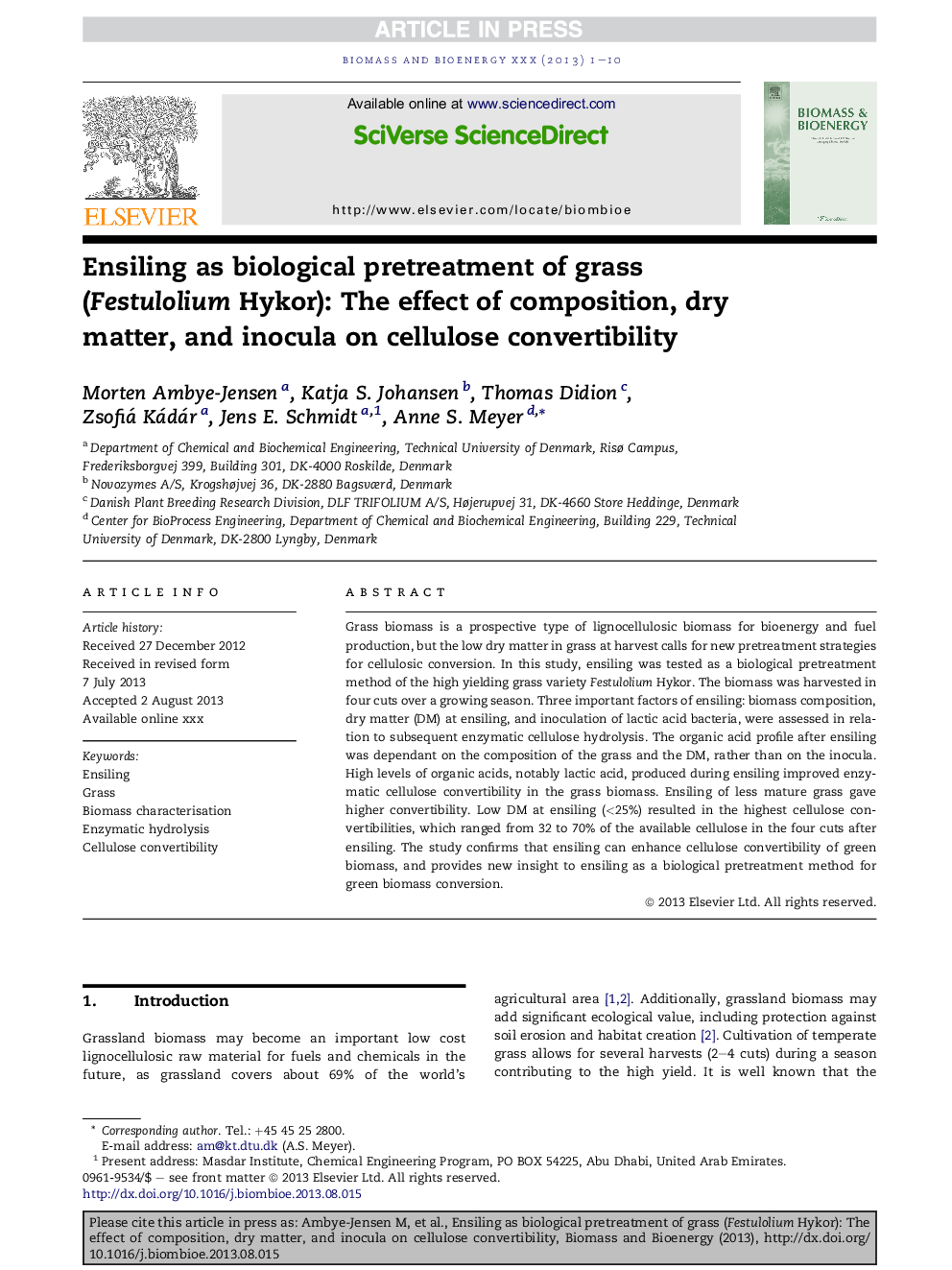| Article ID | Journal | Published Year | Pages | File Type |
|---|---|---|---|---|
| 7065024 | Biomass and Bioenergy | 2013 | 10 Pages |
Abstract
Grass biomass is a prospective type of lignocellulosic biomass for bioenergy and fuel production, but the low dry matter in grass at harvest calls for new pretreatment strategies for cellulosic conversion. In this study, ensiling was tested as a biological pretreatment method of the high yielding grass variety Festulolium Hykor. The biomass was harvested in four cuts over a growing season. Three important factors of ensiling: biomass composition, dry matter (DM) at ensiling, and inoculation of lactic acid bacteria, were assessed in relation to subsequent enzymatic cellulose hydrolysis. The organic acid profile after ensiling was dependant on the composition of the grass and the DM, rather than on the inocula. High levels of organic acids, notably lactic acid, produced during ensiling improved enzymatic cellulose convertibility in the grass biomass. Ensiling of less mature grass gave higher convertibility. Low DM at ensiling (<25%) resulted in the highest cellulose convertibilities, which ranged from 32 to 70% of the available cellulose in the four cuts after ensiling. The study confirms that ensiling can enhance cellulose convertibility of green biomass, and provides new insight to ensiling as a biological pretreatment method for green biomass conversion.
Related Topics
Physical Sciences and Engineering
Chemical Engineering
Process Chemistry and Technology
Authors
Morten Ambye-Jensen, Katja S. Johansen, Thomas Didion, Zsofiá Kádár, Jens E. Schmidt, Anne S. Meyer,
